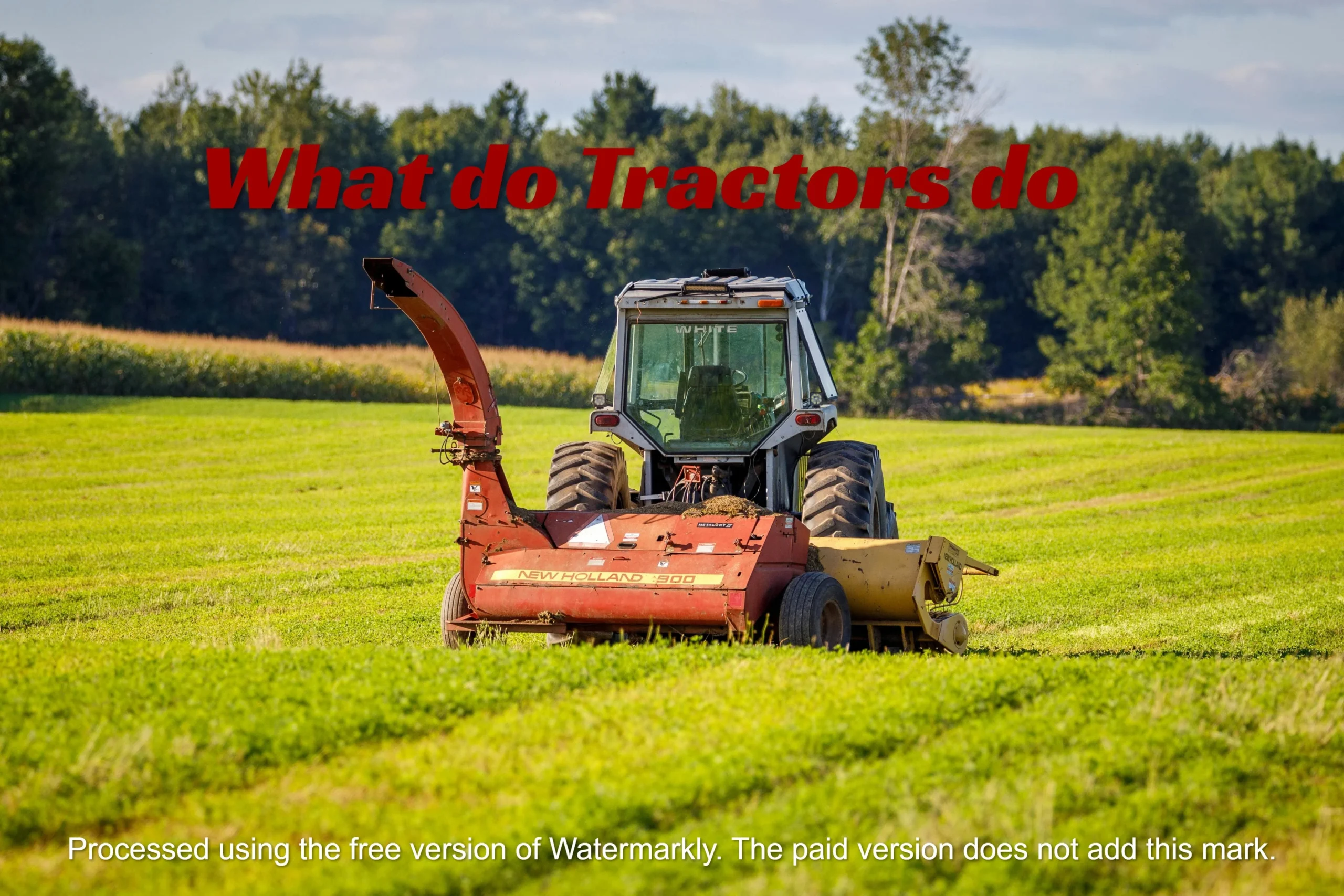Tractors are versatile vehicles primarily used in agriculture for tasks such as plowing, tilling, planting, and harvesting crops. They provide the power needed to pull various implements and machinery, making them essential for modern farming practices. Additionally, tractors are utilized in construction, landscaping, and transportation of goods, owing to their robust build and towing capabilities.
Introduction
Tractors are the unsung heroes of the agricultural world, playing a vital role in the production of the food we consume daily. These powerful machines have revolutionized farming practices, making it possible to cultivate vast swaths of land efficiently and effectively. However, the versatility of tractors extends far beyond their traditional role in tilling and plowing fields. In this comprehensive article, we’ll delve into the multifaceted functions of these workhorses, exploring their diverse applications and the pivotal role they play in modern agriculture.
Primary Functions of Tractors in Agriculture
Tillage and Seedbed Preparation
One of the primary functions of tractors is to prepare the soil for planting. This process, known as tillage, involves breaking up and turning over the soil to loosen it and incorporate organic matter and fertilizers. Tractors are equipped with a variety of implements, such as plows, disc harrows, and cultivators, to perform this task effectively.
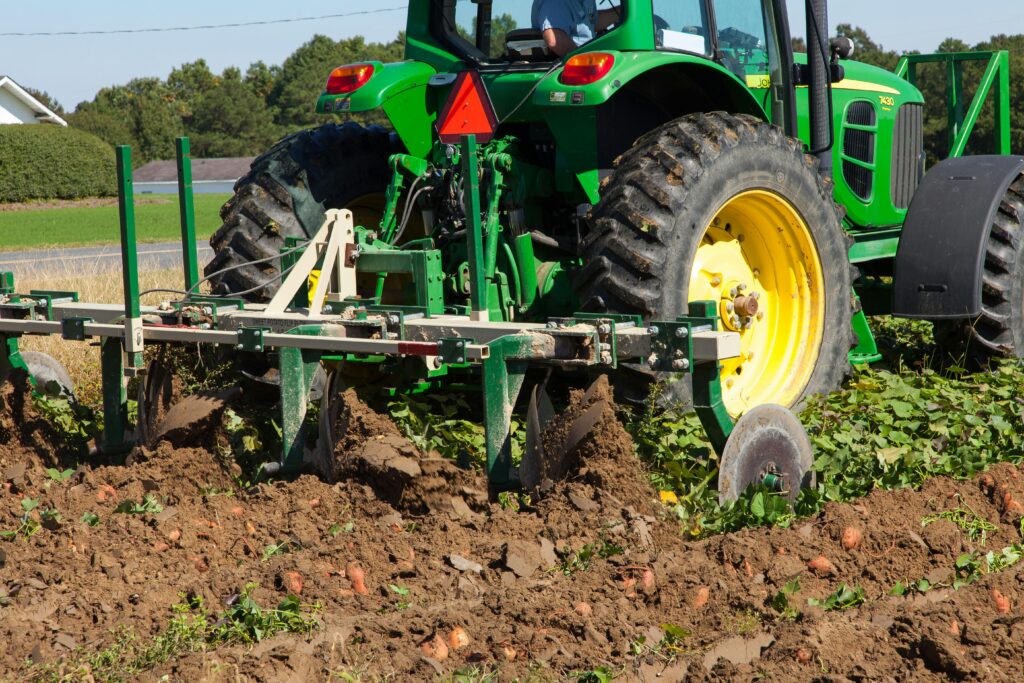
Plowing
Plowing is the process of turning over the soil to a depth of several inches, which helps to bury crop residues and weeds while breaking up compacted soil layers. This practice is typically carried out using moldboard plows, which are designed to cut and lift the soil, inverting it in a continuous furrow.
Disking
Disking is another essential step in seedbed preparation. It involves using a disc harrow, which is a implement with multiple concave discs arranged in a row or a gang. These discs cut and break up the soil, creating a smooth, level surface ideal for planting.
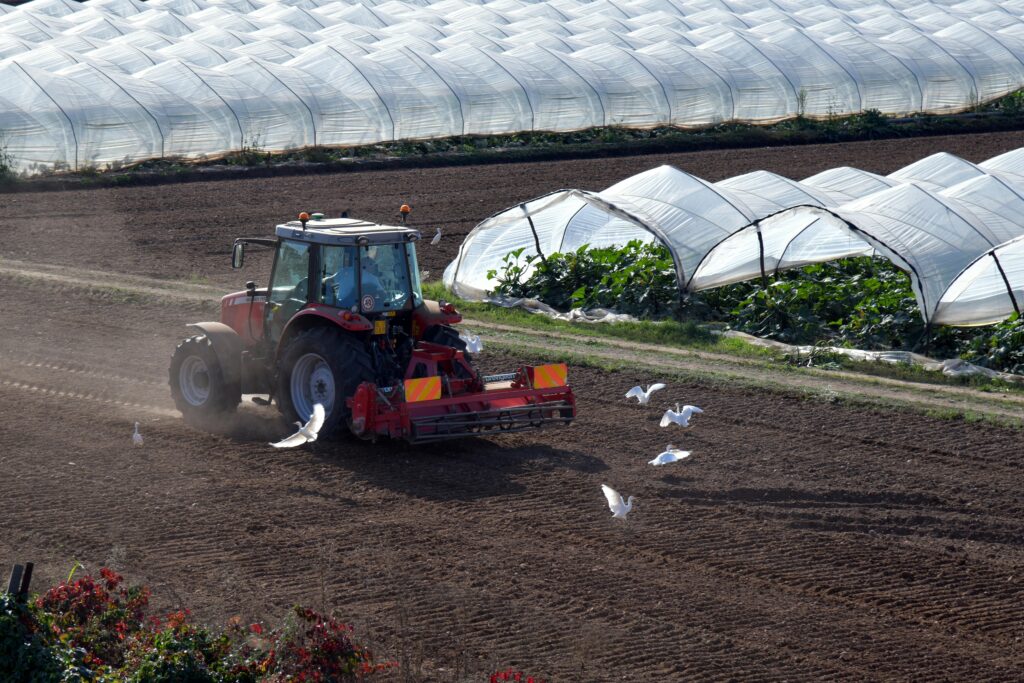
Cultivating
Cultivating is the process of loosening and aerating the soil around growing crops. It helps to control weeds and improve soil structure, allowing for better root development and water infiltration. Cultivators, which can be equipped with various types of sweeps or shovels, are used for this purpose.
Planting and Seeding
Once the seedbed is prepared, tractors play a crucial role in planting and seeding operations. They are equipped with specialized planters and seeders that accurately place seeds at the desired depth and spacing, ensuring optimal germination and crop growth.
Row Crop Planters
Row crop planters are designed for planting crops such as corn, soybeans, and cotton. These implements feature multiple seed hoppers and furrow openers that precisely deposit seeds in evenly spaced rows.
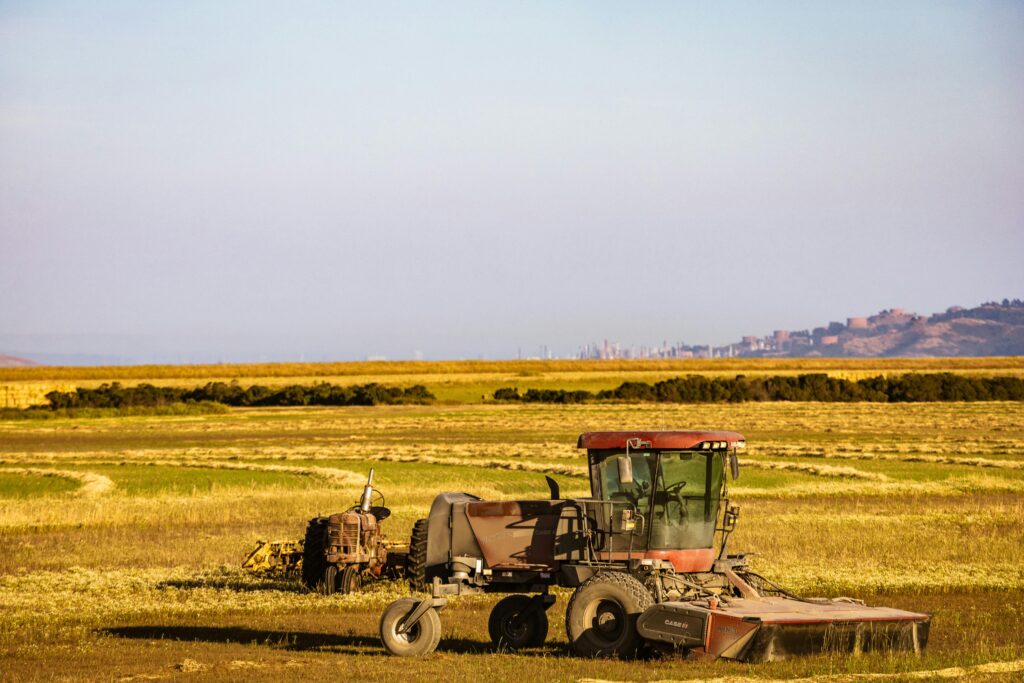
Grain Drills
Grain drills are used for planting small grains like wheat, barley, and oats. These implements have several seed hoppers and furrow openers that distribute seeds evenly across the field, ensuring consistent germination and growth.
Crop Maintenance and Protection
Throughout the growing season, tractors play a crucial role in maintaining and protecting crops from pests, diseases, and environmental stresses.
Spraying
Tractors can be equipped with sprayers to apply pesticides, herbicides, and other crop protection products. These implements can be mounted on the tractor or towed behind, and they feature a boom or nozzles that distribute the chemicals evenly across the crop.
Fertilizing
Maintaining proper nutrient levels in the soil is essential for crop growth and yield. Tractors are used to pull or mount fertilizer spreaders, which evenly distribute granular or liquid fertilizers across the field.
Cultivation
In addition to the initial seedbed preparation, tractors are used for ongoing cultivation throughout the growing season. This process involves using cultivators to loosen the soil and remove weeds, ensuring that the crop has access to necessary resources like water and nutrients.
Harvesting and Post-Harvest Operations
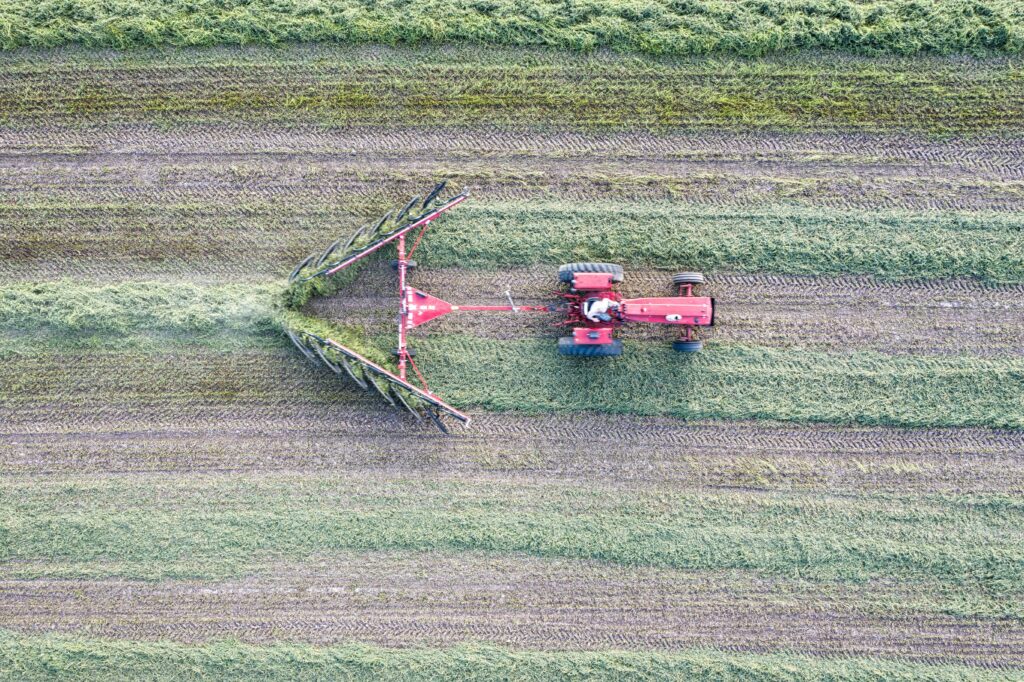
Harvesting
As crops reach maturity, tractors play a pivotal role in the harvesting process, whether it’s combining grains, picking fruits and vegetables, or cutting and baling hay and forage crops.
Combines
For grains like wheat, corn, and soybeans, tractors are used to pull or power combines. These specialized machines cut the crop, separate the grain from the straw and chaff, and collect the harvested grain in a hopper.
Forage Harvesters
For hay and other forage crops, tractors are used to pull or power forage harvesters. These implements cut and chop the crop, which is then blown into a trailing wagon or truck for transport to the farm or processing facility.
Specialty Harvesters
Certain crops, such as potatoes, sugar beets, and cotton, require specialized harvesters that are pulled or powered by tractors. These implements are designed to efficiently and gently harvest the crop while minimizing damage and loss.
Post-Harvest Operations
Once the crop is harvested, tractors continue to play a vital role in various post-harvest operations, such as transporting, processing, and storing the harvested products.
Baling
For hay and other forage crops, tractors are used to pull or power balers, which compress the crop into compact bales for easier handling, transport, and storage.
Loading and Hauling
Tractors equipped with front-end loaders or other material handling implements are used to load and transport harvested crops from the field to storage facilities or processing plants.
Processing
In some cases, tractors are used to power or pull processing equipment, such as threshers, shellers, or grinders, to prepare the harvested crop for further use or storage.
Other Applications of Tractors
While agriculture is the primary domain of tractors, these versatile machines have found applications in various other industries and settings.
Construction and Landscaping
Tractors equipped with specialized attachments like backhoes, loaders, and bulldozer blades can be used for construction and landscaping tasks, such as digging, grading, and moving materials.
Forestry and Logging
In the forestry and logging industry, tractors are used for skidding logs, clearing land, and performing other heavy-duty tasks in remote and rugged environments.
Snow Removal
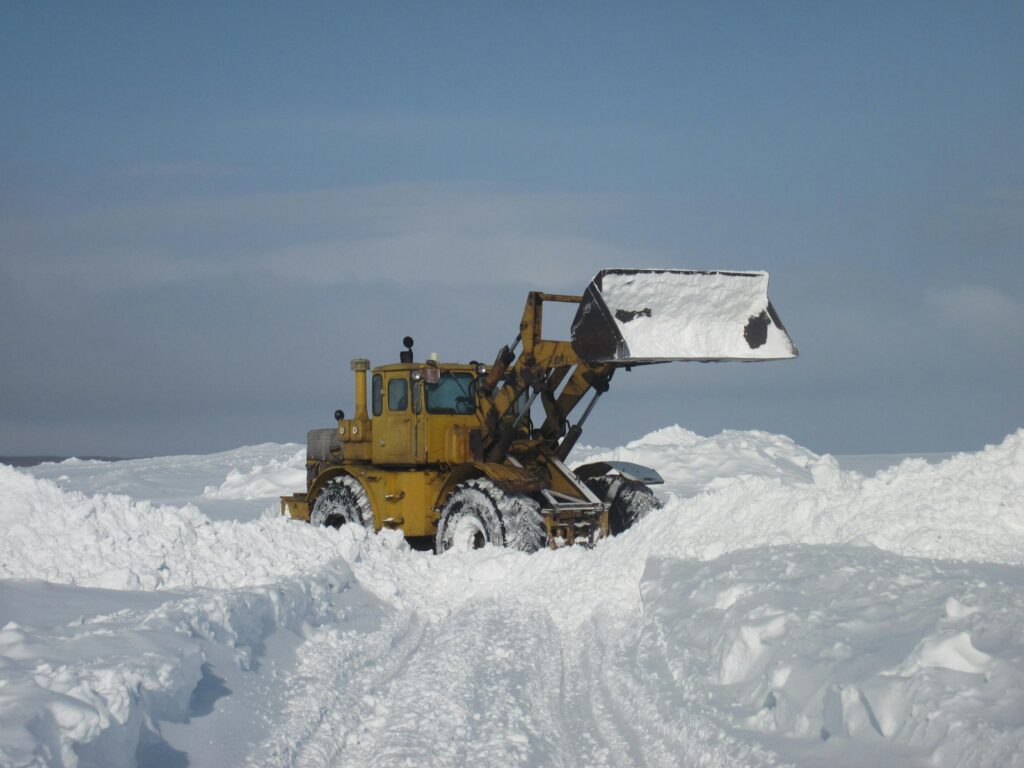
During the winter months, tractors can be outfitted with snowplows, blowers, or brushes to clear snow from roads, parking lots, and other areas, making them invaluable in regions with heavy snowfall.
Emergency Response
In emergency situations, such as natural disasters or search and rescue operations, tractors can be used to clear debris, transport equipment and personnel, and perform other critical tasks in challenging environments.
Tractor Technology and Innovations
As technology continues to advance, tractors have also undergone significant improvements and innovations to enhance their efficiency, productivity, and environmental sustainability.
Precision Agriculture
Precision agriculture is a farming management concept that combines various technologies, such as GPS, sensors, and computerized systems, to optimize crop production and minimize input costs and environmental impact. Tractors equipped with precision agriculture technology can perform tasks like variable-rate fertilizer and pesticide application, yield mapping, and automated steering, resulting in more efficient and sustainable farming practices.
Automation and Autonomous Operation
Advances in automation and robotics have led to the development of semi-autonomous and fully autonomous tractors. These machines can perform various tasks, such as plowing, planting, and harvesting, with minimal human intervention, potentially increasing productivity and reducing labor costs.
Alternative Fuel Sources
In an effort to reduce greenhouse gas emissions and promote sustainability, tractor manufacturers are exploring alternative fuel sources, such as biofuels, electricity, and hydrogen. These alternative fuel sources have the potential to significantly reduce the environmental impact of tractor operations while maintaining the necessary power and performance.
Telematics and Remote Monitoring
Telematics systems and remote monitoring technologies allow farmers and equipment managers to track and monitor tractor performance, location, and maintenance requirements in real-time. This not only helps optimize operations but also enables predictive maintenance, reducing downtime and maximizing the lifespan of the equipment.
Tables
Here are two tables related to tractors and their functions:
Table 1: Common Tractor Implements and Their Uses
| Implement | Primary Use |
|---|---|
| Plow | Breaking up and inverting soil for tillage |
| Disc Harrow | Cutting and leveling soil for seedbed preparation |
| Cultivator | Loosening soil and controlling weeds around growing crops |
| Planter | Precisely placing seeds in the soil for planting |
| Seeder | Evenly distributing seeds for crops like grains and grasses |
| Sprayer | Applying pesticides, herbicides, and other crop protection products |
| Fertilizer Spreader | Distributing granular or liquid fertilizers across fields |
| Combine | Harvesting grain crops like wheat, corn, and soybeans |
| Forage Harvester | Cutting and chopping hay and other forage crops |
| Baler | Compressing hay and forage crops into compact bales |
| Front-End Loader | Loading and transporting harvested crops or materials |
Table 2: Tractor Power and Size Classifications
| Classification | Engine Power Range | Common Applications |
|---|---|---|
| Sub-Compact | Up to 20 HP | Small-scale farming, landscaping, hobby farming |
| Compact | 20-40 HP | Vegetable farming, orchards, vineyards, hobby farming |
| Utility | 40-100 HP | Row crop farming, hay production, livestock operations |
| Row Crop | 100-200 HP | Large-scale row crop farming (corn, soybeans, cotton) |
| High-Horsepower | Over 200 HP | Broad-acre crop farming (wheat, barley, canola), heavy tillage |
Conclusion
Tractors are truly the workhorses of the agricultural industry, performing a wide range of tasks that are essential for the production of the food we consume. From tilling and planting to harvesting and post-harvest operations, these versatile machines play a crucial role in every step of the farming process. Additionally, their applications extend beyond agriculture, making them invaluable in industries such as construction, forestry, and emergency response.
As technology continues to evolve, tractors are also undergoing significant advancements, incorporating precision agriculture techniques, automation, alternative fuel sources, and telematics systems. These innovations not only improve efficiency and productivity but also promote environmental sustainability and resource conservation.
Whether you’re a farmer, an agricultural enthusiast, or simply someone who appreciates the importance of food production, understanding the diverse functions and capabilities of tractors is essential. These powerful machines are truly the backbone of modern agriculture, and their impact on our ability to feed a growing global population cannot be overstated.
FAQs
- What is the primary function of a tractor in agriculture? The primary function of a tractor in agriculture is to provide the power and versatility necessary for various farming operations, such as tillage, planting, crop maintenance, harvesting, and post-harvest activities. Tractors are essential for efficiently cultivating vast areas of land and ensuring a reliable food supply.
- What are some common implements used with tractors? Common implements used with tractors include plows, disc harrows, cultivators, planters, seeders, sprayers, fertilizer spreaders, combines, forage harvesters, balers, and loaders. These implements are designed to perform specific tasks, such as tilling, planting, crop protection, harvesting, and material handling.
- How do tractors contribute to precision agriculture? Tractors play a crucial role in precision agriculture by incorporating technologies like GPS, sensors, and computerized systems. These technologies allow for precise operations, such as variable-rate fertilizer and pesticide application, yield mapping, and automated steering, resulting in more efficient and sustainable farming practices.
- What are the benefits of autonomous or semi-autonomous tractors? Autonomous and semi-autonomous tractors offer several benefits, including increased productivity, reduced labor costs, and improved operational efficiency. These tractors can perform tasks like plowing, planting, and harvesting with minimal human intervention, potentially optimizing resources and minimizing errors.
- What alternative fuel sources are being explored for tractors? Tractor manufacturers are exploring alternative fuel sources, such as biofuels, electricity, and hydrogen, to reduce greenhouse gas emissions and promote environmental sustainability. These alternative fuel sources have the potential to significantly reduce the environmental impact of tractor operations while maintaining the necessary power and performance.

